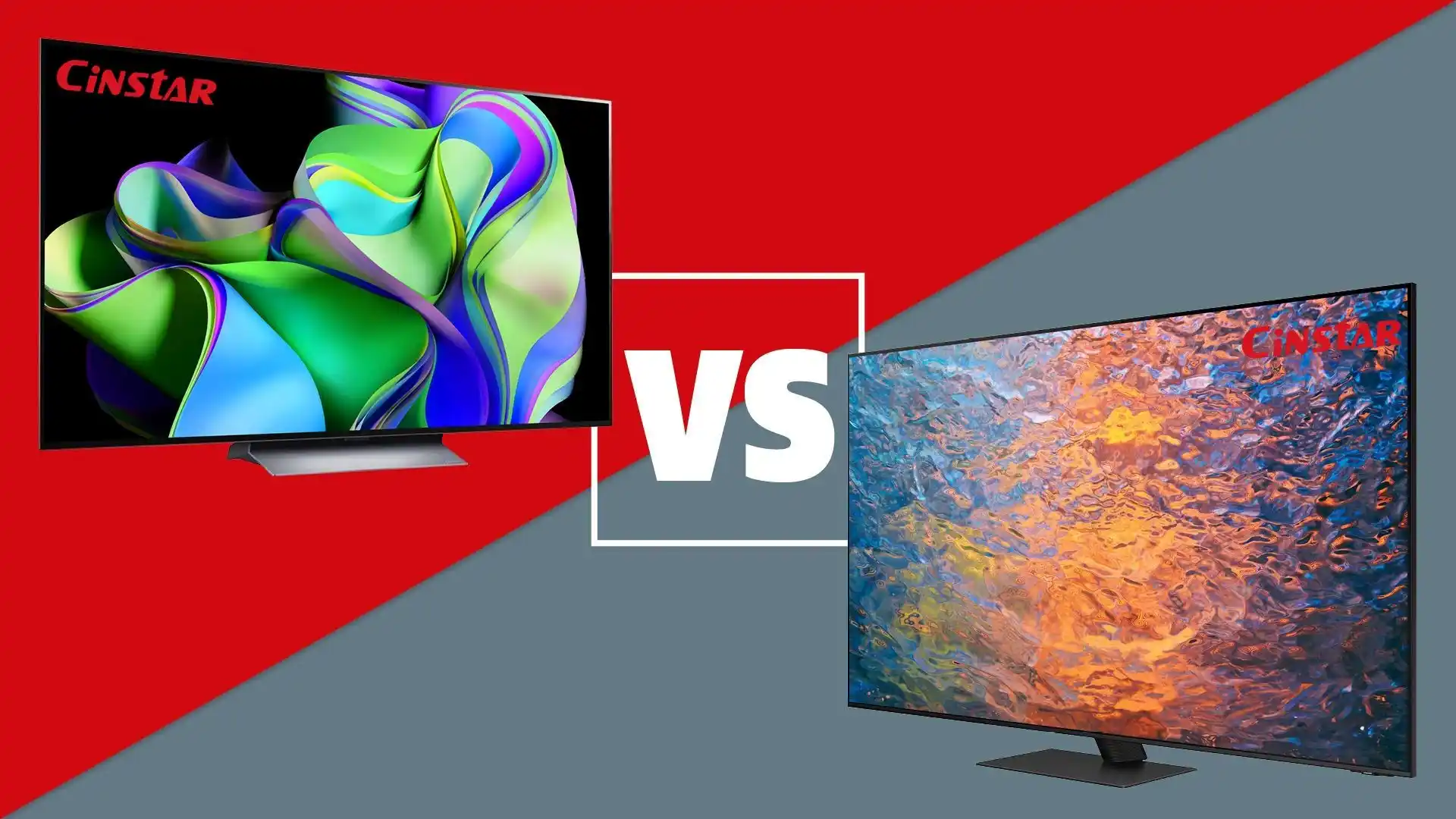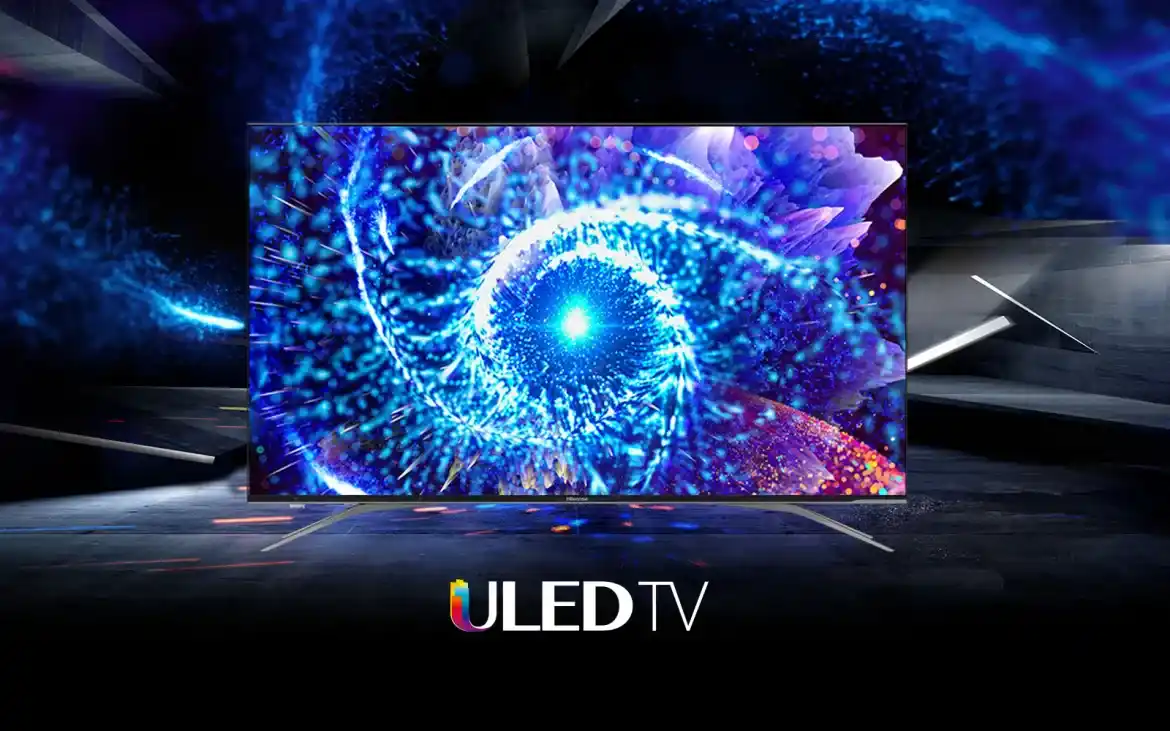ULED vs QLED: What’s the Difference and Which Should You Choose?
As you explore new TVs, you may find yourself confused about ULED and QLED. Both offer a brighter, colorful, and higher contrast image than an LED screen. However, they work in slightly different ways. So, in this blog, we are discussing their differences. This will help you find the best LED display screen for advertising outdoors.
Additionally, understanding how they work can help make a more informed decision regarding next screen replacement or purchasing a new screen installation.

What is a ULED Display?
ULED stands for Ultra-Light-Emitting Diode, and Hisense adopted this name. ULED is not a future-generation display panel, but rather a collection of high-end picture technologies used in LED TVs. They consist of local dimming, wide color gamut, motion smoothing, and HDR optimization.
Characteristics of ULED:
- Greater Contrast: Local dimming provides darker blacks and brighter whites.
- Fluid Movement: The smoothest viewing for fast-moving images, including sports.
- Better HDR: Enhanced tone mapping for a better natural look.
- Efficient Power Consumption: Consumes less power than traditional LEDs.
ULED monitors are gaining popularity as a replacement for LED display screens in outdoor billboard applications. It is due to their ability to produce consistent brightness and clarity during the daytime.

What is a QLED TV?
QLED is an acronym for Quantum Dot Light Emitting Diode. A QLED TV is an LCD TV that uses quantum dot technology to enhance brightness and color accuracy.
Main Features of QLED:
- Brighter pictures: Perfect for homes filled with plenty of natural light.
- Cinematic color gamut: Quantum dots provide richer red colors and deeper greens.
- Long-term: LED backlighting is designed to remain bright for an extended period.
- Affordable spectrum: QLED TVs are obtainable within a wide range of affordability.
QLED displays are utilized as outdoor LED signage and high-end advertising displays due to their superior performance in bright environments.

ULED vs QLED: The Main Differences
While both technologies aim to improve LED performance, they focus on different aspects of image quality.
| Feature | QLED | ULED |
|---|---|---|
| Technology | Quantum dot layer on LED | Enhanced LED with multiple tech upgrades |
| Brightness | Very high | High but optimized |
| Color Accuracy | Excellent with quantum dots | Strong, but slightly below QLED |
| Contrast | Good | Superior due to local dimming |
| Price Range | Broad (mid to high) | Often more affordable |
| Ideal For | Bright rooms, outdoor ads | Cinematic visuals, motion-heavy content |
Overall, QLED prioritizes color and brightness, and ULED provides higher contrast and true detail. Your preference is based on your environment.
Which One Should You Use?
The right option will rely on where and how you want to use the screen.
- For outdoor or commercial use, QLED screens are brighter during the day. So, these are suitable for both outdoor LED display screens and retail advertising purposes.
- For home installations or home theaters, ULED provides vivid contrast, richer blacks, and a cinematic feel.
- In dynamic commercial lighting environments, ULED panels balance efficiency and performance, making them easy to integrate into various settings.
The two technologies are continually being upgraded, and most LED Screen Manufacturers, such as Cinstar LED, have been developing solutions that combine greater color, brightness, and control capabilities for various purposes.
Why Businesses Use LED Displays More Than TVs
Although ULED and QLED are ideal for home entertainment purposes, companies prefer LED display panels for commercial purposes. Here's the reason why:
- Scalability: LED panels can be engineered into various forms and sizes.
- Durability: Designed to last under weather, sun, and long usage hours.
- Brightness control: Suitable for billboard advertisement, even under sunlight exposure.
- Energy efficiency: Lower power consumption than large LCD screens.
A quality LED Screen Manufacturer like Cinstar LED develops panels for retail signs, events, and architectural displays that are more reliable and flexible than average TVs.
Conclusion
QLED and ULED technology mean significant upgrades in display performance over LEDs. In terms of color and brightness, QLED has the advantage. ULED offers benefits in contrast and motion display. So, consider the technology that suits your needs when buying leds for advertising.
Cinstar LED display manufacturer keeps breaking the mold in this sense, constructing displays that set the bar for quality and reliability in every environment.
